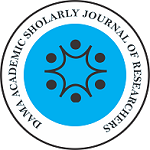Author: Albert Mcbell Ninepence
Ashesi University College, Ghana
Abstract:
Foreign aid in this era has become central on the agenda of policy makers. During the UN 2010 Millennium Goals Summit for instance, evaluation and accountability of aid was accentuated to extend assistance for developing countries to help tone down entrenched poverty. The transfer of funds from one country to another as a form of assistance, however is brimming with disagreements as different groups have diverse views on foreign aid issues. Protagonists of foreign aid maintain that, aid stimulates and precipitates growth and institutional reforms in various developing countries. Antagonist analysts, on the other hand, assert that, aid debilitates institutions of most developing countries, exacerbates corruption, escalates bureaucracy and widens the gap between the haves and the have-nots among other inimical quandary. In this paper, foreign aid has been defined as the transfer of money, goods and services from one country to another. It further expands that, foreign aid gained prominence during and following World War II when aid was primarily used to help rebuild the economies of Western Europe. Subsequently, Sub-Saharan Africa has absorbed almost one trillion in nominal aid dollars over the last fifty years but the growth record is not admirable (Mayo, 2009 and Easterly, 2006). According to the UN Policy Brief No.1 in October 2010, “Africa received a greater share at 36% of total global aid than any part of the world. Over the past four decades, aid to Africa has quadrupled from around US$11 billion to US$ 44 billion with net increase of almost US $10 billion during the period 2005 -2008 alone” (UN, 2010). Another corollary is that, the record of aid to Africa from 1960 and 1997 has been a horrendous failure as more than $500 billion in foreign aid which is equivalent to four Mashall Plans pumped to Africa has created dependence instead of development. Some countries like Malaysia, Taiwan, Israel and Egypt also relied heavily on foreign aid for development. One may then ask: is foreign aid still relevant today? This paper, through underscoring aid’s contributions and setbacks, seeks to establish whether foreign aid is relevant today and to propose an appropriate conclusion on foreign aid.
Keywords: Foreign aid, Economic growth, Economic development, Developing countries, Policy analysis

